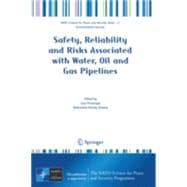
What is included with this book?
| Preface | |
| General Approaches of Pipeline Defect Assessment | |
| Application of Sintap to the Failure Assessment of a Gas Pipes | |
| Interaction between Material Properties, Inspection Accuracy and Defect Acceptance Levels in Strain Based Pipeline Design | |
| Failure of Cylindrical Shells: Numerical and Experimental Study | |
| Leak Detection by Using the Impedance Method | |
| Corrosion Fatigue Cracking and Failure Risk Assessment of Pipelines | |
| Initiation of Stress Corrosion Cracking and Hydrogen Induced Crackin in Oil and Gas Line-Pipe Steels | |
| Failure Analysis of Polyethylene Gas Pipes | |
| Stable and Unstable Crack Growth in Pipes | |
| Some Insights into the Fatigue Crack Propagation in Tubes under Internal Pressure - Proposition of Predicting Models | |
| Hydrogen Effect on Fatigue Life of a Pipe Steel | |
| The Experience on Safety, Reliability and Risk Assessment of Some Ukrainian, Russian and Latvian Transite Pipe Lines | |
| Reliability Assessment of Pipelines Using Phimeca Software | |
| On a New Software Project for Welding Simulations of Pipes (Fabrications, Repairs...) and for the Evaluation of Fatigue Behavior of Pipes in Service | |
| Welded Penstock, Produced of High Strength Steel and Application of Fracture Mechanics Parameters to Structural Integrity Assessment | |
| The Thermal and Mechanical Behavior of a Joint Pipe System Calculated by Finite Element Method | |
| Degradation of the Physical and Mechanical Properties of Pipeline Material Depending on Exploitation Term | |
| Deformation Characteristics of Carbon Steels under High Temperatures | |
| Fracture Mechanics Analysis of Repairing a Cracked Pressure Pipe with a Composite Sleeve | |
| Review of Gas Transmission Pipeline Repair Methods | |
| Table of Contents provided by Publisher. All Rights Reserved. |
The New copy of this book will include any supplemental materials advertised. Please check the title of the book to determine if it should include any access cards, study guides, lab manuals, CDs, etc.
The Used, Rental and eBook copies of this book are not guaranteed to include any supplemental materials. Typically, only the book itself is included. This is true even if the title states it includes any access cards, study guides, lab manuals, CDs, etc.